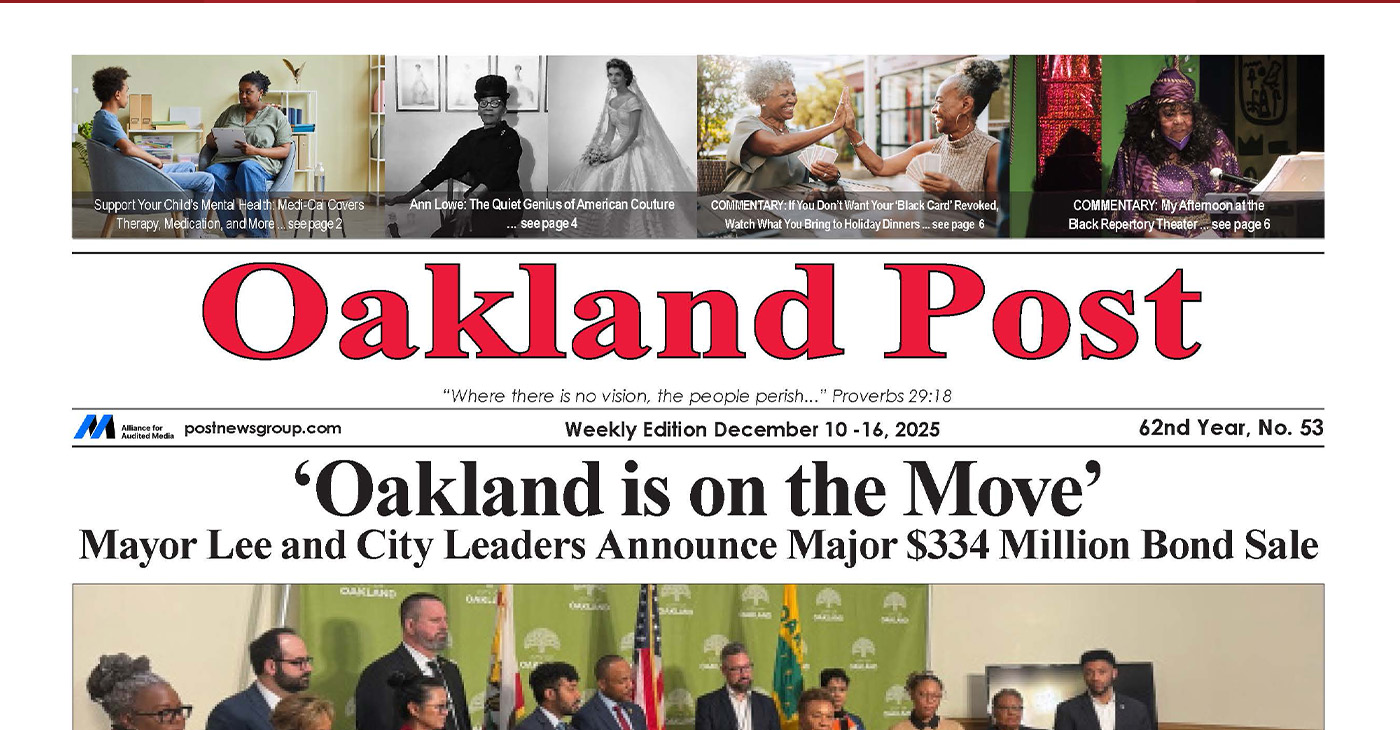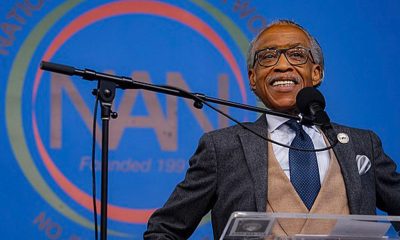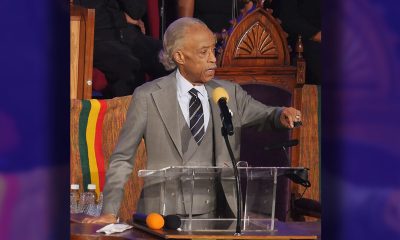Business
AmEx Troubles: Some Cardholders Can Leave Home Without It

In this Jan. 20, 2010 file photo, American Express cards are posed for a photograph in Phoenix. Amex’s stock is down 11 percent this year, making it the second-biggest decliner on the Dow Jones industrial average. (AP Photo/Ross D. Franklin, File)
KEN SWEET, AP Business Writer
NEW YORK (AP) — For decades, American Express was the undisputed credit card of choice among corporate road warriors, the wealthy and the well-traveled, who lived by the company’s slogan, “Don’t leave home without it.”
But changing consumer habits, extremely aggressive competition and increased pushback from its merchants are putting heavy pressure on AmEx.
Rivals are trying to steal away business and are succeeding in some cases. Costco, for example, is ending its 15-year relationship with AmEx and defecting to Citigroup and Visa starting next March. And airlines that used to give VIP lounge access to AmEx cardholders have been switching in recent years to other credit card companies.
Compounding its troubles, AmEx recently lost a major government antitrust lawsuit, a verdict that could damage its ability to compete.
“The competitive environment for AmEx is very challenging,” said Jason Arnold, a Wall Street analyst who covers AmEx for RBS Securities. “Major competitors have all directed their efforts to take chunks away from their business. They’ve got serious problems.”
As a result, American Express stock is down 12 percent this year. Analysts, on average, have cut their 2015 profit forecast from $6.2 billion to $5.6 billion. AmEx recently announced 4,000 layoffs, or about 6 percent of its workforce. And CEO Kenneth Chenault will face a skeptical Wall Street audience Wednesday at the company’s annual investor day.
One of the biggest threats to AmEx is the slew of competing cards aimed at the well-to-do, sometimes with lower annual fees. Card issuers have energetically courted merchants who used to accept only American Express. Merchants who once coveted AmEx’s high-net-worth cardholders are discovering they can find the same customers elsewhere.
Citigroup, in particular, has been going after AmEx’s core customer. Citigroup has hired executives away from AmEx over the past few years to help it overhaul its credit cards and revamp its loyalty program, known as ThankYou. Citi Cards CEO Jud Linville, for example, worked at AmEx for nearly 20 years.
The capture of Costco by Citigroup and Visa was the biggest blow to AmEx. The warehouse-club chain accounted for $80 billion of spending on AmEx’s network last year and 10 percent of AmEx’s cards.
“Costco was a real punch in the gut,” said David Robertson, publisher of the Nilson Report, a major trade journal for the credit card industry.
Citi also recently created a card called Citi Prestige, a high-annual-fee card aimed at AmEx Platinum Card holders.
“Citi’s ThankYou program, a year and a half ago, was pretty much worthless,” said Brian Kelly, editor in chief of thepointsguy.com, a travel and credit card rewards tracking website. “But over the past year Citi has really started to get into the game. They are not at a Chase or AmEx level yet, but based on where they have gone in a short amount of time, they’re becoming quite formidable.”
JPMorgan Chase introduced its own reward cards in 2009 with a program similar to AmEx’s. It is called Chase Ultimate Rewards.
Airport lounge access was once a perk basically guaranteed by AmEx. But American Airlines switched allegiance last year, turning over exclusive access to lounges to Citi cardholders. AmEx cardholders lost access to United Continental’s lounges in 2011 and lost the ability to transfer their points to United in 2012.
Even Discover Financial has gotten into the game. Last month, it introduced a credit card focused on building up miles that can be redeemed for travel.
AmEx hasn’t sat idle. To generate revenue, it has raised annual fees and interest rates on some products. It has also added perks for its customers, such as waiving foreign transaction fees and giving a $100 credit for incidental airline expenses for Gold Card members.
And when AmEx parted ways with United Continental, it went ahead and opened its own airport lounges. It has 13 worldwide so far, with plans to open more this year.
“American Express is still the gold standard when it comes to their rewards program, but lately it seems like all they’re doing is playing catch-up,” Kelly said.
While competitors have been moving upmarket, AmEx in response has been moving in the opposite direction. It now has two pre-paid debit cards, one of them with Wal-Mart. Pre-paid debit cards are typically aimed at low-income consumers who may not have checking accounts. The company also launched a no-annual-fee credit card last year aimed at “everyday” purchases — not the travel-heavy, corporate-expense-account business AmEx is known for.
AmEx isn’t going to let Citi walk away with its Costco card customers without a fight, either. It plans to spend aggressively to try to keep some of them because roughly 70 percent of spending on those cards was done outside the stores, according to AmEx.
“I don’t think there’s anything structurally wrong at AmEx,” said Sanjay Sakhrani, an analyst at Keefe, Bruyette & Woods. “They’re going to get in front of the revenue they are going to lose next year when the Costco relationship ends.”
Along with increased competition, AmEx is facing heavier regulatory pressure. Last month, the Justice Department won an antitrust lawsuit against American Express over its practice of making merchants sign agreements not to express a preference for one card over another.
If AmEx loses on appeal, merchants will be free to express their preferences, and that could force the company to lower the percent it charges them to process cards. That would be a drastic hit to AmEx’s bottom line, and company executives have acknowledged as much.
During the trial last summer, AmEx’s Chenault said the company would be “fighting for our survival” if it lost the case.
Copyright 2015 The Associated Press. All rights reserved. This material may not be published, broadcast, rewritten or redistributed.
Activism
Oakland Post: Week of December 10 – 16, 2025
The printed Weekly Edition of the Oakland Post: Week of – December 10 – 16, 2025

To enlarge your view of this issue, use the slider, magnifying glass icon or full page icon in the lower right corner of the browser window.
Alameda County
Seth Curry Makes Impressive Debut with the Golden State Warriors
Seth looked comfortable in his new uniform, seamlessly fitting into the Warriors’ offensive and defensive system. He finished the night with an impressive 14 points, becoming one of the team’s top scorers for the game. Seth’s points came in a variety of ways – floaters, spot-up three-pointers, mid-range jumpers, and a handful of aggressive drives that kept the Oklahoma City Thunder defense on its heels.

By Y’Anad Burrell
Tuesday night was anything but ordinary for fans in San Francisco as Seth Curry made his highly anticipated debut as a new member of the Golden State Warriors. Seth didn’t disappoint, delivering a performance that not only showcased his scoring ability but also demonstrated his added value to the team.
At 35, the 12-year NBA veteran on Monday signed a contract to play with the Warriors for the rest of the season.
Seth looked comfortable in his new uniform, seamlessly fitting into the Warriors’ offensive and defensive system. He finished the night with an impressive 14 points, becoming one of the team’s top scorers for the game. Seth’s points came in a variety of ways – floaters, spot-up three-pointers, mid-range jumpers, and a handful of aggressive drives that kept the Oklahoma City Thunder defense on its heels.
One of the most memorable moments of the evening came before Seth even scored his first points. As he checked into the game, the Chase Center erupted into applause, with fans rising to their feet to give the newest Warrior a standing ovation.
The crowd’s reaction was a testament not only to Seth’s reputation as a sharpshooter but also to the excitement he brings to the Warriors. It was clear that fans quickly embraced Seth as one of their own, eager to see what he could bring to the team’s championship aspirations.
Warriors’ superstar Steph Curry – Seth’s brother – did not play due to an injury. One could only imagine what it would be like if the Curry brothers were on the court together. Magic in the making.
Seth’s debut proved to be a turning point for the Warriors. Not only did he contribute on the scoreboard, but he also brought a sense of confidence and composure to the floor.
While their loss last night, OKC 124 – GSW 112, Seth’s impact was a game-changer and there’s more yet to come. Beyond statistics, it was clear that Seth’s presence elevated the team’s performance, giving the Warriors a new force as they look to make a deep playoff run.
Activism
Oakland Post: Week of November 26 – December 2, 2025
The printed Weekly Edition of the Oakland Post: Week of November 26 – December 2, 2025

To enlarge your view of this issue, use the slider, magnifying glass icon or full page icon in the lower right corner of the browser window.
-

 Activism4 weeks ago
Activism4 weeks agoOakland Post: Week of November 12 – 18, 2025
-

 Activism3 weeks ago
Activism3 weeks agoIN MEMORIAM: William ‘Bill’ Patterson, 94
-

 Activism4 weeks ago
Activism4 weeks agoHow Charles R. Drew University Navigated More Than $20 Million in Fed Cuts – Still Prioritizing Students and Community Health
-

 Bay Area4 weeks ago
Bay Area4 weeks agoNo Justice in the Justice System
-

 #NNPA BlackPress3 weeks ago
#NNPA BlackPress3 weeks agoBeyoncé and Jay-Z make rare public appearance with Lewis Hamilton at Las Vegas Grand Prix
-

 #NNPA BlackPress3 weeks ago
#NNPA BlackPress3 weeks agoLewis Hamilton set to start LAST in Saturday Night’s Las Vegas Grand Prix
-

 Activism3 weeks ago
Activism3 weeks agoOakland Post: Week of November 19 – 25, 2025
-

 #NNPA BlackPress4 weeks ago
#NNPA BlackPress4 weeks agoThe Perfumed Hand of Hypocrisy: Trump Hosted Former Terror Suspect While America Condemns a Muslim Mayor

















































